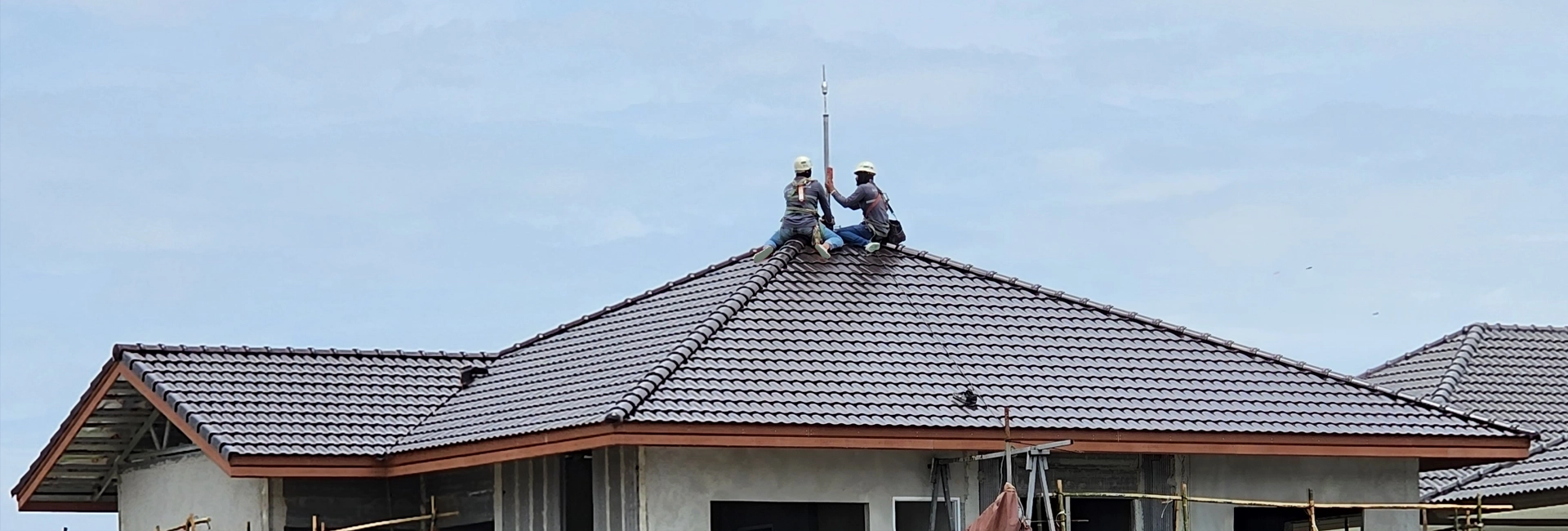Lightning protection system installation work – KCL Trading Co., Ltd. (Samut Sakhon) | Acon Plus
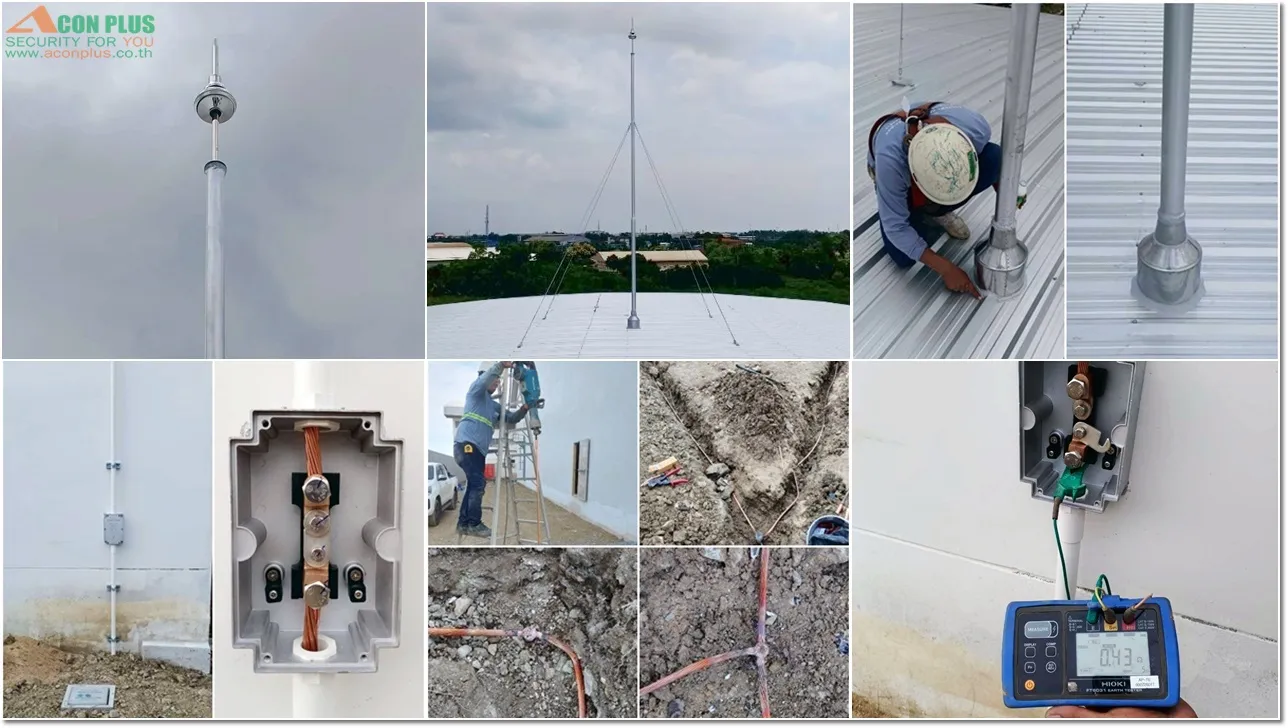
📌 Project Summary
Lightning Protection System (LPS) installation for KCL Trading Co., Ltd., Samut Sakhon. The system uses a LIVA LAP-BX-125 air terminal on a 6-meter steel mast with single-tier guy wires, 95 sq.mm bare copper down conductor inside 1" UPVC conduit, and a complete grounding system in accordance with engineering best practices.
- Client: KCL Trading Co., Ltd.
- Location: Mueang Samut Sakhon, Samut Sakhon Province
- Installation Period: 5–6 Sep 2025
- Ground Test Result: 🔬 0.43 Ω (below recommended ≤ 5 Ω)
- Mast height for air terminal: 6 m
- Bare copper down conductor 95 sq.mm inside 1" UPVC
- Ground resistance complies with EIT guidance (≤ 5 Ω)
🧰 Key Equipment
- Air terminal LIVA LAP-BX-125 (S/N: 51895)
- 6-meter mast with single-tier guy wires
- 95 sq.mm bare copper down conductor inside 1" UPVC conduit
- Grounding system: 5/8" × 10-ft ground rod with exothermic welding and concrete inspection pit
- 95 sq.mm bare copper bonding conductor and Test Box
📷 On-site Photos
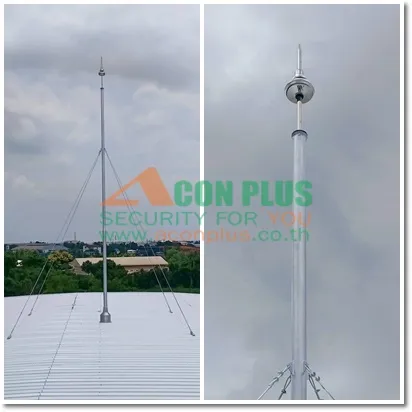
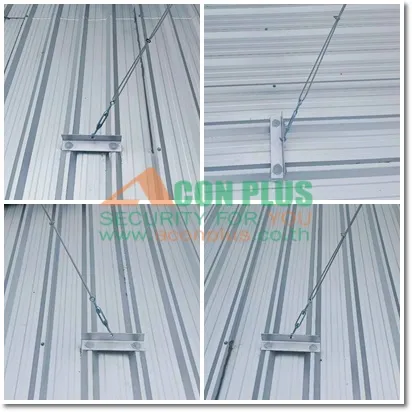
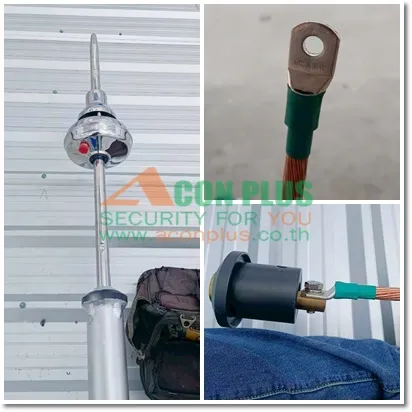
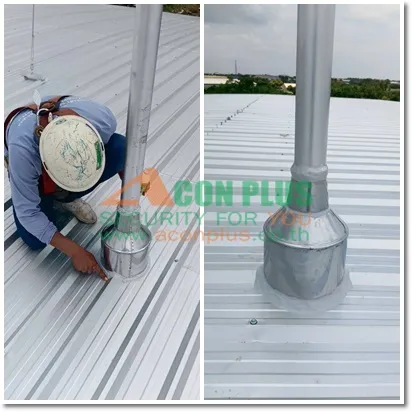
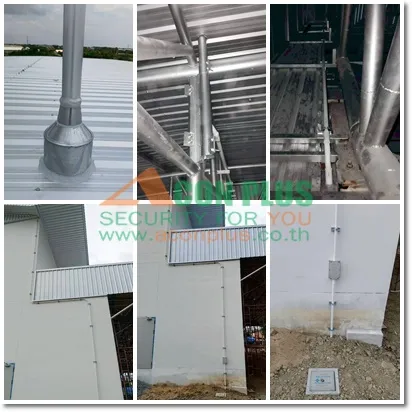
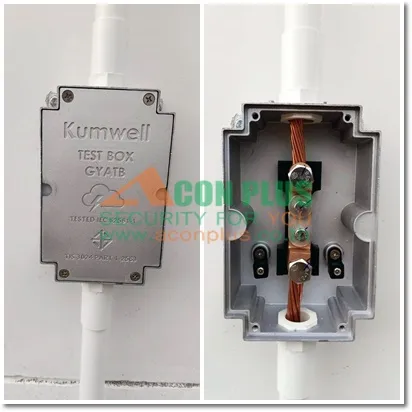
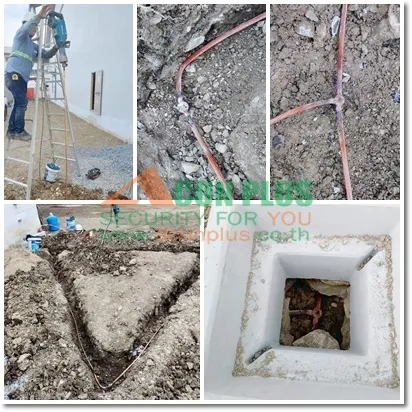
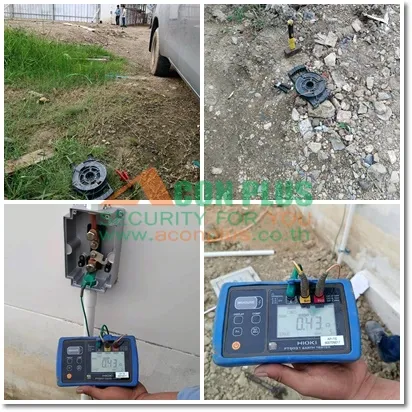
🛠️ Installation Steps (Method Statement)
Check roof structure integrity, clearances, down-conductor routing, and ground/inspection pit positions.
Install 6-m mast with one tier of guy wires, tension properly, and verify anchor points for safety.
Assemble LIVA LAP-BX-125 per manufacturer’s guide and verify all connections.
Route 95 sq.mm bare copper in 1" UPVC conduit along wall/column and fasten with clamps at standard spacing.
Connect the conductor to the Test Box, continue to a 5/8" × 10-ft ground rod with exothermic welding, and install a concrete inspection pit.
Measure ground resistance, record results, conduct joint inspection, and hand over with maintenance guidance.
🔬 Ground Resistance Test Result
On-site measured value: R = 0.43 Ω, which is below the recommended ≤ 5 Ω threshold following local engineering guidance.
📝 Maintenance Advice
- Inspect the down conductor, clamps, and all joints annually; adjust/replace worn components.
- Test ground resistance once a year, and it should not increase more than 20% from the initial recorded value.
- Clean the inspection pit and maintain soil moisture around the ground rod as appropriate.
👷♂️ Team
❓ FAQ
How often should the ground be tested?
At least once per year, or after any site/electrical/grounding modification to ensure values remain within recommended thresholds.
What if the ground resistance exceeds 5 Ω?
Consider adding more ground rods, exothermic connections, extending the ground network, or soil improvement as advised by an engineer.
Is LIVA LAP-BX-125 suitable for my building?
It suits industrial/warehouse/commercial buildings requiring reliable protection radius and durability. Always design per relevant standards by qualified engineers.
